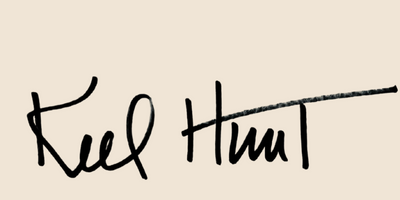The Spoken Word
/Yesterday morning I spent a fine half-hour talking with my friend Pat Nolan, as his guest this weekend on “Inside Politics” on Channel 5+.
To be precise, it was more like 21 minutes. There were three seven minute segments (allowing for the insertion of two commercial breaks). And this time, although Pat was inside the Channel 5 studio downtown, as normal, I was at my desk at home, participating via Zoom.
It went swimmingly. Pat only had to admonish me once, during the first break, to not go on so long with my answers. I will go on, but this was television after all, where time is of the essence and the clock rules.
This was not my first rodeo, and I am always amazed at how much ground Pat can get you to cover in just a little bit of time. Before our brief session was over, we had touched on politics, the presidency, the virus, schools, sports, and the world. So well does Pat Nolan, the professional, prepare.
To this day, I continue to be amazed at how television works. I was trained in the written word, not the spoken. At the newspaper, we did our work in a world of keyboards, pencils, and notebooks. Pat’s world is about lights, cameras, and action.
Over the years, I have had my share of exposure to TV studios and the people who make them work. Pat’s colleagues in the cool medium are, like him, sharp professionals and include many of Tennessee’s (and America’s) best journalists. The work they do is essential to our democracy.
I think now of Bob Mueller and Demetria Kalodimos, Chris Clark and Anne Holt and Carol Marin in their day, to name a just a few. Some of them go on to larger TV markets (as Carol did) but many of the best didn’t leave and remained with us in this Nashville market. Lucky us.
In the 1980s I had my own personal experience with a television studio, apart from the occasional on-camera news interview relating to my day job then at the State Capitol: Alan Griggs, then the news director at Channel 4, invited me to bring a weekly editorial-type commentary for Channel 4, the NBC affiliate, at the close of the “Scene at Six.” For a couple of years, my nights were Mondays.
Time was always of the essence in that studio, too. I was allotted just two minutes. And my salvation was that my piece was taped, not live. We could ask for a do-over, and I often did so. I enjoyed it immensely – well, except for that one Monday when I thought to wear a bow-tie for my broadcast gig. (Soon after my performance aired, my Mom called me up and said, “Honey, never wear a bow-tie on TV again.”)
Speaking of the spoken word. Here’s a question for my Field Notes subscribers, whose numbers by the way have climbed to 515 as of last Wednesday:
Some are suggesting that I think about developing a podcast, similar to a broadcast interview program. I admit it’s a fun idea, but it would take some careful time-management, in addition to the investment in equipment. On the other hand, it could allow for conversations with special guests and in an online format that today is easily accessed for listeners.
But what do you think of this notion? I would appreciate your thoughts.
I have been told, after all, that I have a good face for radio.
© Keel Hunt, 2020


